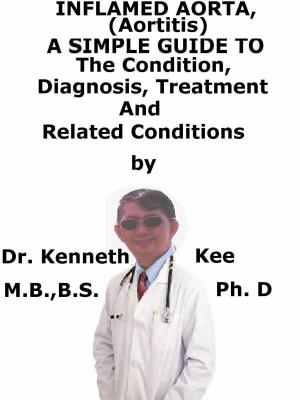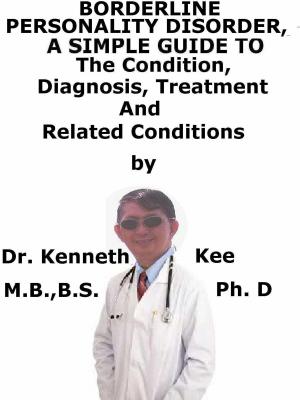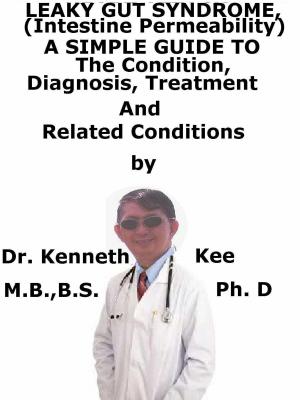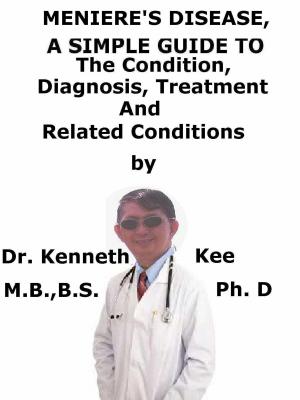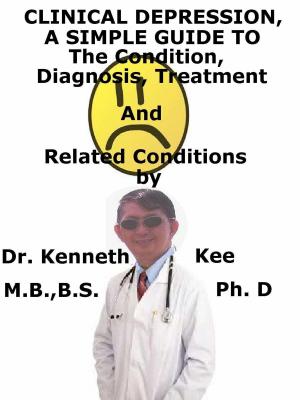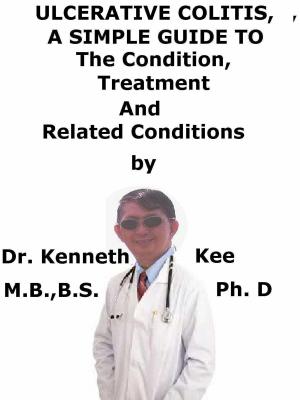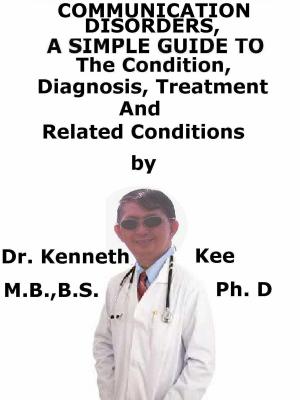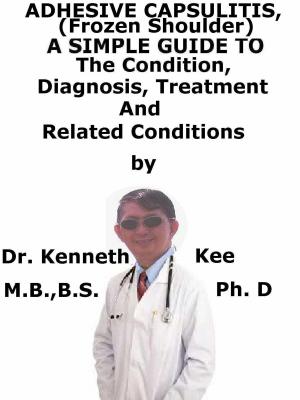High Platelets, A Simple Guide To The Condition, Diagnosis, Treatment And Related Conditions
Nonfiction, Health & Well Being, Medical, Specialties, Internal Medicine, Hematology| Author: | Kenneth Kee | ISBN: | 9781370685448 |
| Publisher: | Kenneth Kee | Publication: | April 17, 2018 |
| Imprint: | Smashwords Edition | Language: | English |
| Author: | Kenneth Kee |
| ISBN: | 9781370685448 |
| Publisher: | Kenneth Kee |
| Publication: | April 17, 2018 |
| Imprint: | Smashwords Edition |
| Language: | English |
High Platelets
Today I received a laboratory report of a patient who had 1,093,000 platelets per micro liter which is well above the normal maximal level of 450,000 platelets.
This is the first time that I have received such a high level of platelets in my 41 years of medical practice.
I probably have to do further investigations on him before I can come to a conclusive diagnosis.
However with such a high platelet count I probably should be worried about the coagulability of his blood and may need to give him a low dose of aspirin to prevent blood clot in his blood vessels.
A high platelet count is 450,000 per micro liter or above
A higher-than-normal number of platelets are called thrombocytosis or thrombocythemia.
It means the body is making too many platelets.
Causes may include:
- A type of anemia in which red blood cells in the blood are destroyed earlier than normal (hemolytic anemia)
- Anemia due to low iron
- After certain infections, major surgery or trauma, or allergic reactions
- Cancer
- Certain medicines
- Bone marrow disease called polycythemia vera
- Bone marrow making too many platelets without a known cause (primary thrombocytosis)
- Recent spleen removal
Some people with high platelet counts may be at risk of forming blood clots.
Blood clots can lead to serious medical problems
Thrombocytosis or thrombocythemia is defined as a platelet count above the upper limit of the normal range (450 x 109 per micro liter in adults).
The term thrombocythemia (or primary thrombocytosis) is preferred when the cause of a high platelet count is not known.
When another disease or condition causes a high platelet count, the term thrombocytosis (or secondary thrombocytosis) is preferred.
It is important to distinguish between true hematological disease causing primary thrombocytosis and secondary or reactive thrombocytosis caused by a physiological response to a primary problem.
There are a number of hematological diseases causing primary thrombocytosis.
Primary thrombocytosis is a chronic myeloproliferative disorder.
However, there are other hematological diseases which can cause primary thrombocytosis, including - Myeloproliferative neoplasms (MPNs),
- Myelodysplastic syndromes (MDS)
- Overlap syndromes.
MPNs such as primary thrombocytosis (essential thrombocythemia), polycythemia vera and myelofibrosis are Philadelphia-negative clonal disorders of the bone marrow.
Types of Thrombocytosis
There are broadly two types of thrombocytosis:
Hematological disease such as primary thrombocytosis
Primary thrombocytosis (also referred to as essential thrombocytosis, essential thrombocythemia and primary thrombocythemia) is due to a failure to regulate the production of platelets (autonomous production) and is a feature of a number of myeloproliferative disorders.
Features are a platelet count greater than 600 x 109 per micro liter, megakaryocyte hyperplasia, splenomegaly and a tendency to both thrombosis and hemorrhage.
Platelet survival is normal but function is not.
Other hematological diseases which cause primary thrombocytosis are myeloproliferative, myelodysplastic or a combination of both.
It includes some leukemia.
With primary thrombocytosis, a high platelet count may occur alone or with other blood cell disorders.
Secondary or reactive thrombocytosis
This can be secondary to a number of conditions.
When another disease or condition produces a high platelet count, the term "thrombocytosis" is preferred.
This condition often is called secondary or reactive thrombocytosis.
It is an exaggerated physiological response to a primary problem, such as an infection.
TABLE OF CONTENT
Introduction
Chapter 1 High Platelets
Chapter 2 Causes
Chapter 3 Symptoms
Chapter 4 Diagnosis
Chapter 5 Treatment
Chapter 6 Prognosis
Chapter 7 Secondary Thrombocytosis
Chapter 8 Low Platelets
Epilogue
High Platelets
Today I received a laboratory report of a patient who had 1,093,000 platelets per micro liter which is well above the normal maximal level of 450,000 platelets.
This is the first time that I have received such a high level of platelets in my 41 years of medical practice.
I probably have to do further investigations on him before I can come to a conclusive diagnosis.
However with such a high platelet count I probably should be worried about the coagulability of his blood and may need to give him a low dose of aspirin to prevent blood clot in his blood vessels.
A high platelet count is 450,000 per micro liter or above
A higher-than-normal number of platelets are called thrombocytosis or thrombocythemia.
It means the body is making too many platelets.
Causes may include:
- A type of anemia in which red blood cells in the blood are destroyed earlier than normal (hemolytic anemia)
- Anemia due to low iron
- After certain infections, major surgery or trauma, or allergic reactions
- Cancer
- Certain medicines
- Bone marrow disease called polycythemia vera
- Bone marrow making too many platelets without a known cause (primary thrombocytosis)
- Recent spleen removal
Some people with high platelet counts may be at risk of forming blood clots.
Blood clots can lead to serious medical problems
Thrombocytosis or thrombocythemia is defined as a platelet count above the upper limit of the normal range (450 x 109 per micro liter in adults).
The term thrombocythemia (or primary thrombocytosis) is preferred when the cause of a high platelet count is not known.
When another disease or condition causes a high platelet count, the term thrombocytosis (or secondary thrombocytosis) is preferred.
It is important to distinguish between true hematological disease causing primary thrombocytosis and secondary or reactive thrombocytosis caused by a physiological response to a primary problem.
There are a number of hematological diseases causing primary thrombocytosis.
Primary thrombocytosis is a chronic myeloproliferative disorder.
However, there are other hematological diseases which can cause primary thrombocytosis, including - Myeloproliferative neoplasms (MPNs),
- Myelodysplastic syndromes (MDS)
- Overlap syndromes.
MPNs such as primary thrombocytosis (essential thrombocythemia), polycythemia vera and myelofibrosis are Philadelphia-negative clonal disorders of the bone marrow.
Types of Thrombocytosis
There are broadly two types of thrombocytosis:
Hematological disease such as primary thrombocytosis
Primary thrombocytosis (also referred to as essential thrombocytosis, essential thrombocythemia and primary thrombocythemia) is due to a failure to regulate the production of platelets (autonomous production) and is a feature of a number of myeloproliferative disorders.
Features are a platelet count greater than 600 x 109 per micro liter, megakaryocyte hyperplasia, splenomegaly and a tendency to both thrombosis and hemorrhage.
Platelet survival is normal but function is not.
Other hematological diseases which cause primary thrombocytosis are myeloproliferative, myelodysplastic or a combination of both.
It includes some leukemia.
With primary thrombocytosis, a high platelet count may occur alone or with other blood cell disorders.
Secondary or reactive thrombocytosis
This can be secondary to a number of conditions.
When another disease or condition produces a high platelet count, the term "thrombocytosis" is preferred.
This condition often is called secondary or reactive thrombocytosis.
It is an exaggerated physiological response to a primary problem, such as an infection.
TABLE OF CONTENT
Introduction
Chapter 1 High Platelets
Chapter 2 Causes
Chapter 3 Symptoms
Chapter 4 Diagnosis
Chapter 5 Treatment
Chapter 6 Prognosis
Chapter 7 Secondary Thrombocytosis
Chapter 8 Low Platelets
Epilogue
